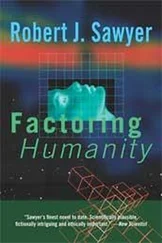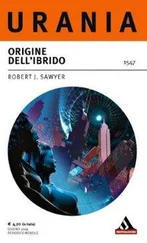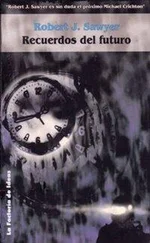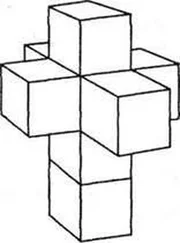Hominids
by Robert J. Sawyer
For Marcel Gagne And Sally Tomasevic
Dude and The Other Dude
Great People, Great Friends
Author’s Note: A -tal Tale
So is it Neanderthal or Neandertal ?
Both spellings are correct, and both are in common usage, even among paleoanthropologists.
The fossil this type of hominid is named for was found in 1856, in a valley near Dыsseldorf. The place was then called Neanderthal – thal meaning “valley,” and “Neander” being a Greek version of “Neumann,” the surname of the fellow after whom the valley was named.
Early in the twentieth century, the German government regularized spelling across all parts of their nation, and “thal” and “tal,” both of which were in use up to that time in various parts of the country, became just “tal.” So it’s clear that the place that used to be called Neanderthal is now only correctly spelled Neandertal .
But what about the fossil hominid? Should we therefore rename it Neandertal , as well?
Some say yes. But there’s a problem: scientific names are cast in stone once coined and, for all time, this type of hominid will be known in technical literature with a “th” spelling, either as Homo neanderthalensis or Homo sapiens neanderthalensis (depending on whether one classifies it as a separate species from us, or merely a subspecies). It does seem awkward to spell the “neanderthal” part differently in the scientific and English names.
Meanwhile, those who favor the use of the spelling “Neandertal man” are notably silent when the topic of Peking man comes up; there’s no movement to change that name to “Beijing man,” even though the city’s name is always spelled Beijing in English these days.
I checked the latest editions of six major English-language dictionaries: The American Heritage English Dictionary , The Encarta World English Dictionary , Merriam-Webster’s Collegiate Dictionary (Tor’s house standard), The Oxford English Dictionary , Random House Webster’s Unabridged Dictionary , and Webster’s New World Dictionary . All accept both spellings.
And what about pronunciation? Some purists contend that regardless of whether you spell it –tal or –thal , you should pronounce it with a hard-T sound, since both t and th have always denoted that in German.
Maybe so, but I’ve heard many paleoanthropologists say it with an English th sound (as in thought ). And of the six dictionaries I checked, all of them except the OED allow both pronunciations (with the OED accepting only –tal ). The argument that English speakers should pronounce it the way German speakers do seems to imply that we should also call the capital of France “par-ee,” rather than “pair-is,” and yet doing so would be considered pretentious in most contexts.
Ultimately, it comes down to personal choice. In the extensive collection of research materials I consulted in creating this book, the –thal spelling outnumbers the –tal by better than two-to-one (even in recent technical literature), so I’ve settled on the original spelling, Neanderthal –which you may pronounce whichever way you wish.
The southern forests provide the message that it didn’t have to be this way, that there is room on the earth for a species biologically committed to the moral aspects of what, ironically, we like to call “humanity”: respect for others, personal restraint, and turning aside from violence as a solution to conflicting interests. The appearance of these traits in bonobos hints at what might have been among Homo sapiens, if evolutionary history had been just slightly different.
Richard Wrangham and Dale Peterson Demonic Males: Apes and the Origins of Human Violence
You have zero privacy anyway. Get over it.
Scott McNealy Chief Executive Officer Sun Microsystems
Day One
Friday, August 2
148/118/24
The blackness was absolute.
Watching over it was Louise Benoit, twenty-eight, a statuesque postdoc from Montreal with a mane of thick brown hair stuffed, as required here, into a hair net. She kept her vigil in a cramped control room, buried two kilometers—“a mile an’ a quarder,” as she sometimes explained for American visitors in an accent that charmed them—beneath the Earth’s surface.
The control room was next to the deck above the vast, unilluminated cavern housing the Sudbury Neutrino Observatory. Suspended in the center of that cavern was the world’s largest acrylic sphere, twelve meters—“almost fordy feet”—across. The sphere was filled with eleven hundred tonnes of heavy water on loan from Atomic Energy of Canada Limited.
Enveloping that transparent globe was a geodesic array of stainless-steel struts, supporting 9,600 photomultiplier tubes, each cupped in a reflective parabola, each aimed in toward the sphere. All of this—the heavy water, the acrylic globe that contained it, and the enveloping geodesic shell—was housed in a ten-story-tall barrel-shaped cavern, excavated from the surrounding norite rock. And that gargantuan cavern was filled almost to the top with ultrapure regular water.
The two kilometers of Canadian shield overhead, Louise knew, protected the heavy water from cosmic rays. And the shell of regular water absorbed the natural background radiation from the small quantities of uranium and thorium in the surrounding rock, preventing that, too, from reaching the heavy water. Indeed, nothing could penetrate into the heavy water except neutrinos, those infinitesimal subatomic particles that were the subject of Louise’s research. Trillions of neutrinos passed right through the Earth every second; in fact, a neutrino could travel through a block of lead a light-year thick with only a fifty-percent chance of hitting something.
Still, neutrinos poured out of the sun in such vast profusion that collisions did occasionally occur—and heavy water was an ideal target for such collisions. The hydrogen nuclei in heavy water each contain a proton—the normal constituent of a hydrogen nucleus—plus a neutron, as well. And when a neutrino did chance to hit a neutron, the neutron decayed, releasing a proton of its own, an electron, and a flash of light that could be detected by the photomultiplier tubes.
At first, Louise’s dark, arching eyebrows did not rise when she heard the neutrino-detection alarm go ping , the alarm sounded briefly about a dozen times a day, and although it was normally the most exciting thing to happen down here, it still didn’t merit looking up from her copy of Cosmopolitan .
But then the alarm sounded again, and yet again, and then it stayed on, a solid, unending electric bleep like a dying man’s EKG.
Louise got up from her desk and walked over to the detector console. On top of it was a framed picture of Stephen Hawking—not signed, of course. Hawking had visited the Sudbury Neutrino Observatory for its grand opening a few years ago, in 1998. Louise tapped on the alarm’s speaker, in case it was on the fritz, but the keening continued.
Paul Kiriyama, a scrawny grad student, dashed into the control room, arriving from elsewhere in the vast, underground facility. Paul was, Louise knew, usually quite flustered around her, but this time he wasn’t at a loss for words. “What the heck’s going on?” he asked. There was a grid of ninety-eight by ninety-eight LEDs on the detector panel, representing the 9,600 photomultiplier tubes; every one of them was illuminated.
Читать дальше










